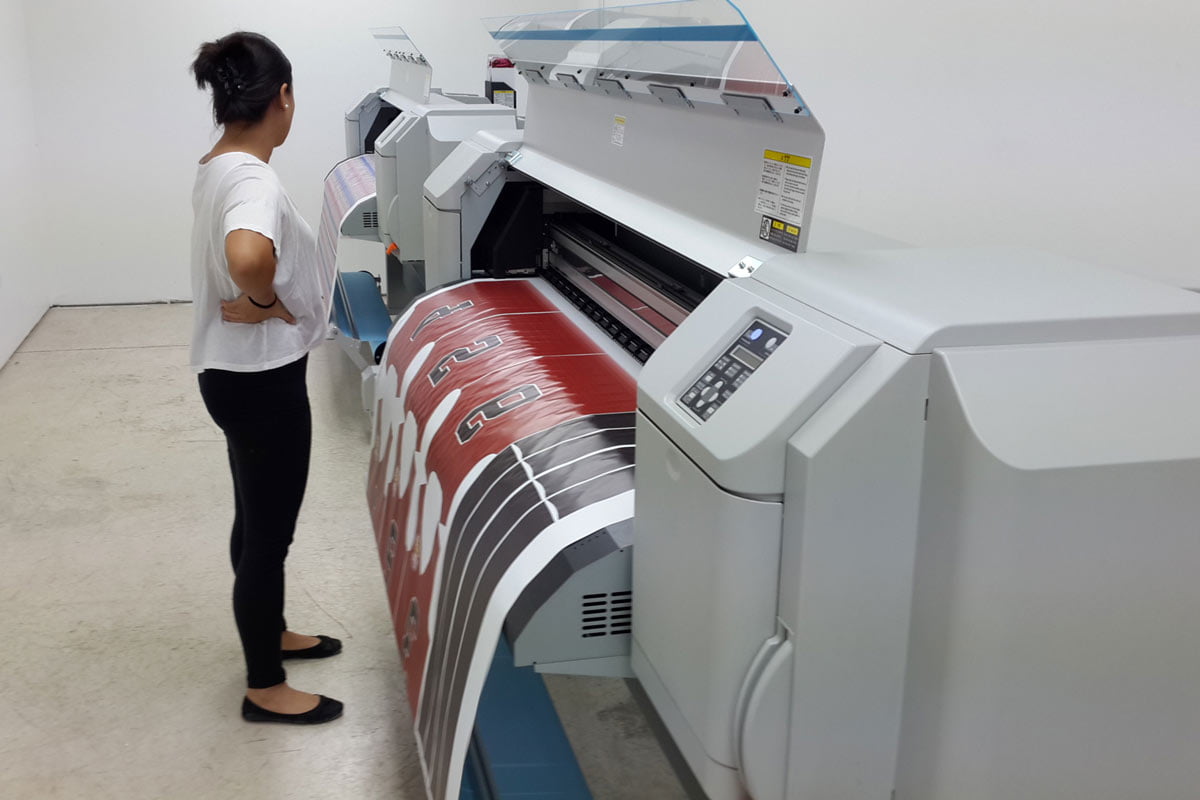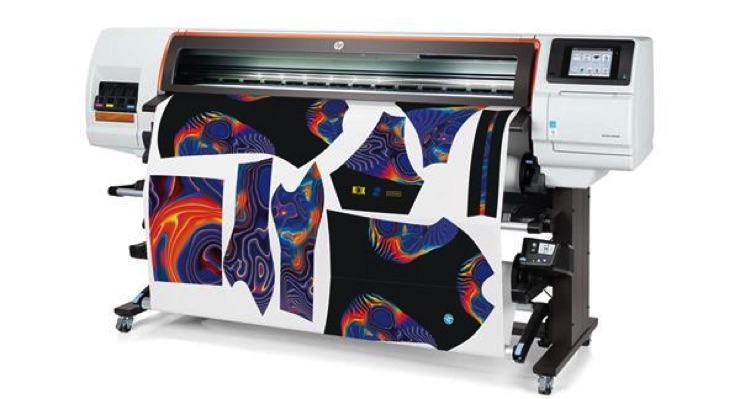Releasing Imagination with Heat Transfer Vinyl Printing for Customized Designs
Releasing Imagination with Heat Transfer Vinyl Printing for Customized Designs
Blog Article
From Standard to Digital: Comprehending the Development of Cloth Printing
The transformation of cloth printing from traditional approaches like block printing and withstand dyeing to modern techniques such as display and electronic printing marks a significant change in the textile sector. Standard methods, soaked in artisanal craftsmanship and social relevance, have slowly offered method to digital technologies that provide unprecedented precision, performance, and modification. This transition not just improves production abilities but additionally straightens with growing demands for lasting practices. Exactly how do these advancements influence the essence of towel printing, and what might the future hold for this ever-evolving craft?
Traditional Towel Printing Approaches
In the very early stages of textile production, conventional towel printing methods served as the cornerstone of fabric design, providing both capability and imaginative expression. Block printing, one of the earliest methods, entailed carving elaborate designs right into wooden blocks, which were then dipped in dye and pressed onto fabric.
Resist dyeing, consisting of strategies like batik and tie-dye, utilized wax or other materials to protect against dye from passing through particular locations of the textile. This method created striking contrasts and detailed layouts, commonly imbued with cultural significance. Stenciling, another typical technique, included cutting patterns right into a product and applying dye through the openings, offering a simpler yet efficient way to create repeated layouts.
These conventional approaches not just formed the fabric industry's early development yet also prepared for future technologies. Each technique mirrored the social and local attributes of its origin, protecting and disseminating artisanal expertise through generations.
The Rise of Screen Printing
Just how did display printing transform the landscape of fabric design? The advent of display printing in the very early 20th century marked a significant departure from standard methods, using extraordinary flexibility and effectiveness. This technique includes pushing ink through a great mesh screen that has actually been stenciled with a layout, enabling high precision and uniformity. Screen printing enabled designers to create complex patterns and vibrant colors on materials, which were previously challenging to attain with block printing or hand-painting approaches.
Among the vital benefits of display printing is its capacity to duplicate complex layouts widespread with remarkable fidelity. This scalability made it profoundly preferred in the industrial fabric market, where mass production without compromising high quality is critical. Screen printing fits a wide array of dyes and inks, increasing the scheme of structures and coatings offered to designers.
Additionally, the process is extremely adaptable, suitable for different material kinds consisting of cotton, silk, and synthetics. This flexibility, incorporated with its cost-efficiency for large runs, strengthened display printing's duty as a foundation of modern fabric manufacturing. Therefore, the increase of display printing transformed the market, pressing the borders of what was feasible in textile style.

The Advent of Digital Printing
Structure on the exceptional improvements brought by display printing, the fabric market experienced one more groundbreaking development with the introduction of electronic printing. Arising in the late 20th century, electronic printing reinvented the method get more designs are moved onto textiles, supplying unmatched versatility and efficiency. Unlike standard methods, which commonly required read review extensive setup and substantial hand-operated intervention, digital printing uses computer-aided design (CAD) innovation to produce elaborate patterns straight onto the fabric with high precision.
This advancement has actually enabled fabric producers to fulfill the expanding demand for customization and on-demand manufacturing. By getting rid of the need for plates and screens, digital printing reduces preparations and lessens product waste, making it a more lasting choice. The ability to print intricate photos and a vast array of shades in a single pass has opened brand-new creative opportunities for developers, fostering a surge in artistic expression within the industry.
Additionally, digital printing supports smaller batch production runs, which is particularly beneficial for specific niche markets and start-up fashion brand names. This technological leap has not only improved operational effectiveness however also democratized access to premium fabric printing, establishing the stage for future innovations in fabric design and production.
Contrasting Techniques: Standard Vs. Digital
While both standard and digital printing approaches have their own special benefits, they differ significantly in regards to procedure, effectiveness, and environmental influence. Typical fabric printing, incorporating techniques like block printing and display printing, entails hand-operated labor and detailed craftsmanship. These approaches are commemorated for their capacity to produce vibrant colors and abundant textures, usually resulting in distinct, artisan-quality items. Nonetheless, they are labor-intensive, time-consuming, and typically limited in regards to color variety and design intricacy.
In contrast, digital printing employs advanced modern technology to transfer layouts straight onto textile making use of inkjet printers. Digital printing is considerably quicker, permitting for fast turnarounds and just-in-time manufacturing, which decreases the demand for huge inventory storage space.
From an environmental point of view, digital printing is usually much more sustainable. It makes use of less water and generates very little waste contrasted to conventional approaches, which often entail considerable washing and coloring processes. As a result, electronic printing is increasingly preferred in an era where ecological considerations are paramount.
Future Patterns in Towel Printing
As the fabric industry continues to evolve, future fads in fabric printing frequently direct towards better combination of innovation and sustainability. One substantial fad is the boosted application of electronic printing innovations. These developments enable for greater accuracy, faster production times, and the capacity to create intricate layouts that were once tough with traditional techniques. Digital fabric printing is anticipated to dominate the marketplace, driven by its efficiency and adaptability to customer demands for individualized and limited-edition products.

Additionally, the unification of smart textiles, which incorporate digital elements into textiles, is readied to transform the market. These textiles can give extra performances such as temperature level policy, wellness surveillance, and interactive functions. As modern technology continues to advancement, the junction of digital printing and wise fabrics will open brand-new avenues for creative and functional applications in towel printing.
Verdict
The advancement of towel printing from traditional techniques to electronic advancements marks a significant transformation in the fabric market. While standard techniques highlight artisanal workmanship and social heritage, electronic printing provides unequaled precision, effectiveness, and modification. This change not just improves manufacturing capacities however likewise supports sustainability initiatives. Future patterns are most likely to proceed incorporating innovative innovations, additionally redefining fabric layout and manufacturing processes to meet ecological considerations and contemporary demands (DTF printing).
The change of cloth printing from conventional approaches like block printing and withstand dyeing to contemporary techniques such as screen and digital printing marks a significant change in the textile sector. Screen printing allowed designers to produce intricate patterns and vivid shades on textiles, which were formerly testing to attain with block printing or hand-painting methods.
Building on the amazing developments brought by screen printing, the fabric market experienced an additional groundbreaking advancement with the introduction of electronic printing. DTF printing. Typical towel printing, including methods like block printing and display printing, includes hands-on labor and detailed craftsmanship. As technology continues to breakthrough, the intersection of digital printing and smart fabrics will open brand-new avenues for functional and creative applications in towel printing
Report this page